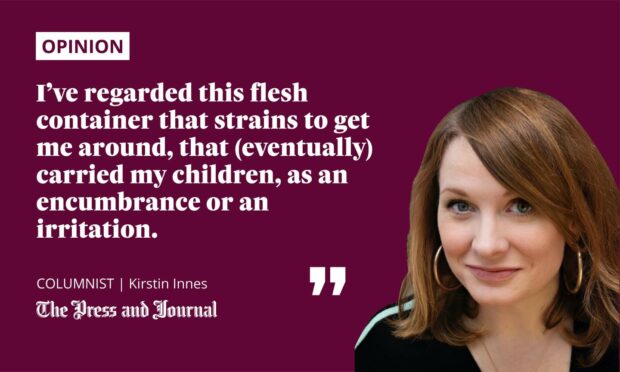I’m writing this on my birthday, so please excuse the self-indulgent tone.
It’s not a significant one: last year’s was the significant one and my grand plans to book a house that slept 35 for a weekend-long house party (January 2020) gradually filleted down to a bell tent party for 10 pals (August 2020), then finally to one-on-one sessions in people’s gardens and a Zoom disco.

This year I got the party, again, scaled-down. Fifteen pals under a gazebo in my garden on a surprisingly warm night. At one point there was a rap battle. The sense of something being marked by a coming-together felt important in ways I hadn’t realised I’d missed.
The green velvet jumpsuit and the fabulous shoes which have sat unworn at the back of a cupboard for a year finally got an outing. I also finally managed to get a slot for the Thai massage my friends had bought me a voucher for, a week before it expired.
Thai massage or is it ‘lazy yoga’?
That was something else. Moonie, the therapist, asked me what areas I’d like to address. Well, I’m always, always tired, and I’ve got a bit of an achy, twingey back, I said, but I tried to joke it off as just usual mum-of-small-kids stuff. I couldn’t think of anything else that was really bothering me – when she asked for my medical history I flagged up the C-section three years ago but couldn’t really think of anything else.
Moonie took me more seriously than I did, though. Within 15 minutes of moving my body for me (Thai massage is sometimes jokingly called “lazy yoga” as the therapist puts you in a variety of positions you – OK, I – definitely couldn’t manage unassisted) while I zoned out, she’d identified the problem.
I’ve regarded this flesh container that strains to get me around, that (eventually) carried my children, as an encumbrance or an irritation; something to be dieted and reduced, fobbed off with paracetamol if its warning signs become too insistent.
“Your pelvis has been sitting out of line for quite a while now. Probably around five, six years? It’s meant that everything along your back is misaligned, which is leading to your pain, and also probably your energy blockages.”
It felt at first as though she’d performed the tricks of a cheap psychic at a party; I immediately began scanning through what I’d said to her to see where she’d got the clues from. Yes, I had had a lot of intense pelvic problems in both my pregnancies, the first of which was six years ago, where I couldn’t walk uphill or manage stairs after about five months in, but I hadn’t said that to her.
Ignoring my body – like most of us do
Ten minutes later, now up at my neck, she did it again. “There’s a big problem here,” and her fingers pinched and probed my left shoulder, causing my arm to shoot out involuntarily. “This has been like this for a long time, I think. Maybe more than 10 years?” and I remembered that in 2010 I’d been running over the bridge at Elgin station, desperate to catch my train, had thrown my holdall over my shoulder and it had yanked the muscle out of place. It took a sling, a TENS machine and a couple of weeks to get back to normal. There was no way she could have known that, because I hadn’t even remembered it myself.
That split-second injury, even the fortnight of recovery, don’t feature in the way I think of myself or my history. Moonie worked it out because she was able to read it on my body, and read my body better than I can myself; because I’ve been ignoring my body, in the same way that most of us do. I disguise it every day to hide the bits I don’t like – that bulge over my C-section scar, the broad back and aging arms – doing what the poet Catriona Innes (no relation) calls “dress[ing] in a way to shrink myself” in her poem, 90s child.
90s child, a poem about body image… pic.twitter.com/Ao0hSiTOQ4
— Catriona Innes (@catreenaah) August 17, 2021
This isn’t a significant birthday – 41. I need to wait nine years for another big one. But it does mark 10 years from the date that my partner and I started trying to have a baby, and the eventual revelation that there were forces at work in my body beyond my control that meant we couldn’t, without years of trauma and medical help.
Regarded this flesh container as an encumbrance
And, ever since, I’ve regarded this flesh container that strains to get me around, that (eventually) carried my children, as an encumbrance or an irritation; something to be dieted and reduced, fobbed off with paracetamol if its warning signs become too insistent. I always suspect there may be more hidden thinks lurking there now, too.
Certainly, I don’t think of it as part of me. Or all of me. Maybe this will be a significant birthday because all that will change. So, yes, please excuse the self-indulgence. It’s just something I’m working on.
Kirstin Innes is the author of the novels Scabby Queen and Fishnet, and co-author of the forthcoming non-fiction book Brickwork: A Biography of the Arches
Read more by Kirstin Innes:
- Carers don’t have the time or energy to make themselves heard
- Libraries are inspirational safe havens we can’t afford to lose
- Just surviving isn’t enough – that’s why we need words, music, art and each other
